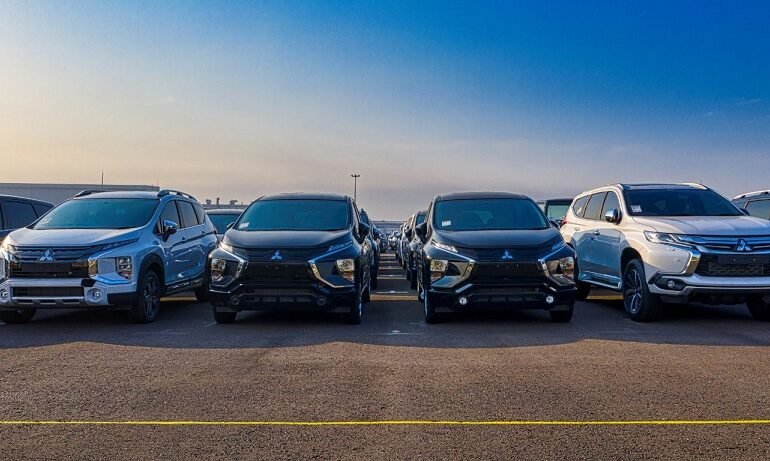A Comprehensive Car Market Analysis

Automotive innovation and economic activity have long been a hallmark of the industry, symbolizing individuality and personal freedom. However, the modern car market is navigating through a complex set of challenges and opportunities, as high-speed tides of technology, consumer demands, and global events reshuffle the deck at a rapid pace.
This detailed market analysis aims to uncover the nuances of the current global car market explore emerging trends driving the industry forward and forecast the future of automotive commerce. We will take an in-depth look at electric vehicle (EV) trends geopolitical shifts and societal changes as they impact car preferences. Here are some of the essential points we will cover:
- Introduction to the Car Market’s Current State
- Trends Shaping the Car Market
- Key Players and Market Share
- Regional Differences and Consumer Preferences
- Impact of Recent Events on the Car Market
- Future Outlook and Predictions
Join us as we hit the gas in this in-depth exploration of the automotive industry.
1. Introduction to the Current State of the Car Market
Understanding the global auto market’s current condition is crucial for industry stakeholders since it is in constant evolution. In modern life cars are a staple of the streets of major urban centers as well as the open roads of rural America. With a total value of trillions of dollars the world market is a mosaic of regional contrasts and untapped potentials.
A Global Overview
Across continents, the global car market produces, markets, and sells automobiles. It is a dynamic place where technology, economics, and culture intersect. China and India have grown exponentially both in terms of production and consumption in regions like the Asia-Pacific, while established markets in the US and Europe have experienced shifts in consumer sentiment and regulatory pressures.
Local Market Spotlight
It’s not just about the big picture — local markets are vibrant microcosms of the global industry. They reflect the unique tastes, regulations, and economic conditions that shape individual buying decisions. Local market dynamics can range from the high-performance obsession of the Middle East to the compact car culture of Japanese cities, serving as integral pieces of the global puzzle.
2. Trends Shaping the Car Market
It is impossible to conduct a comprehensive analysis of the car market without examining the trends dictating its trajectory.
The Drive Towards Electrification
In recent years, electric vehicles have driven the ‘green’ revolution in the automotive industry at lightning speed. Electric cars aren’t just dipping their toes in the water — they’re fully charged and ready to disrupt combustion engines. Governments everywhere are setting ambitious carbon emission reduction targets, so the shift to EVs is inevitable.
The Autonomous Car Frontier
It is rapidly becoming a reality to drive an autonomous car once a figment of science fiction. As a result of artificial intelligence sensor technology and cutting-edge automotive engineering the pursuit of self-driving technology is a masterclass in innovation. As cities and suburbs reshape themselves with autonomous vehicles companies like Tesla, Waymo and traditional giants like BMW and Toyota are investing heavily.
Integrated Connectivity and In-Car Tech
In-car technology is transforming cars into hubs of connectivity productivity and entertainment. Today’s cars are more than just modes of transportation they’re mobile command centers. With infotainment systems smartphone integration and the Internet of Things (IoT) individualized driving experiences were once impossible.
3. Key Players and Market Share
The global car market is dominated by a handful of heavyweights, each jockeying for position and seeking to carve out their share of the pie.
Top Manufacturers at a Glance
The primary manufacturers, from General Motors to Toyota to Volkswagen to Ford, are household names synonymous with innovation and legacy. With electric vehicles, hybrids, and new platforms, these companies are addressing the 21st century head-on. Long-standing leaders are often challenged by new competitors focused on emerging technologies and niche markets, which causes market share fluctuations.
Market share movement
Tesla’s brilliant rise for illustration has re-imagined what a car producer can be disturbing the status quo with its electric models. There are clear champs and washouts within the battle for dominance within the worldwide car showcase. As a result companies that are moderate to respond to changing advertise requests or contribute in feasible advances have seen their offers decrease. The future governance of car standards and regulations will also have a bearing on the share price.
4. Regional Differences and Consumer Preferences
Car preferences are as diverse as the landscapes they traverse, and understanding regional differences is key to successful market penetration.
Cultural and Social Factors
It is deeply ingrained in society that cars play a crucial role, and their significance varies widely. In some regions, cars are status symbols, decrees of a personal or professional success. Others use them as practical necessities, such as family mobility vehicles or labor-intensive tools. Understanding these divergent roles is imperative for any business looking to break into a new market.
Economic Variances
Consumers’ choices of cars are influenced by factors such as purchasing power, taxation, and maintenance costs. High-income countries often demand top-of-the-line cars with the latest technology, while regions with lower standards of living place higher value on affordability, durability, and fuel efficiency. Increasingly, urban areas are also being impacted by shared mobility and subscription services.
Environmental awareness
The green movement is in full gear and profoundly affects consumer preferences. There is a growing desire for cars that leave a smaller carbon footprint leading to an increased interest in EVs hybrids and more fuel-efficient models. Government incentives and public campaigns further fuel the shift toward environmentally friendly options.
5. Impact of Recent Events on the Car Market
The auto industry, like many others, is not immune to global events’ ripple effects.
The Global Pandemic’s Toll
With the COVID-19 pandemic production halted supply chains were disrupted and sales dropped dramatically across the global car market. The crisis has accelerated certain trends such as the growing demand for contactless car shopping and online sales platforms. Consumer behaviors have shifted with a greater emphasis on personal health and safety features.
Geopolitical and Trade Shifts
A number of geopolitical tensions can impact supply chains and create volatility in sales figures including trade wars sanctions and geopolitical instability. Tariffs and trade agreements can make or break markets while geopolitical tensions can influence supply chains.
6. Future Outlook and Predictions
Looking to the future, what might tomorrow’s car market look like?
Electric Takes the Lead
There is no doubt that electric vehicles are not just passing trends but the future’s flagbearer. As infrastructure improves vehicle ranges increase and the cost of batteries drops the market is expected to continue to grow. Despite being a niche market electric cars are an essential part of the automotive industry.
The rise of Mobility Services
Mobility services are likely to transform car ownership in the next decade, as ride-sharing, carpooling, and subscription services redefine personal mobility and impact sales models and automobile design.
The luxury of time
It may be a few time some time recently we reach the level of independent driving that we see in sci-fi motion pictures, but incremental progresses will bring us closer. In expansion to changing customer encounters, urban arranging and activity administration will got to be reimagined as well.
7. Conclusion
Car enthusiasts and industry professionals alike can gain a deeper understanding of the evolving car market that is subject to the ebbs and flows of economic technological and societal factors.
You will be able to navigate through the complex landscape of the automotive industry with our analysis as your guide. As you decode the signals and signs along the way the car market analysis acts as your compass, whether you are in the era of electrification the era of autonomy or the era of the interactive present.
Taking a deeper look at the car market is intended to inspire conversation, ignite strategies, and increase our understanding of a vibrant and diverse industry. Stay tuned for the next shift in the automotive world. The race never ends, and the automotive industry never stops evolving. Share your thoughts, continue the conversation, and keep an eye out for the next shift.









